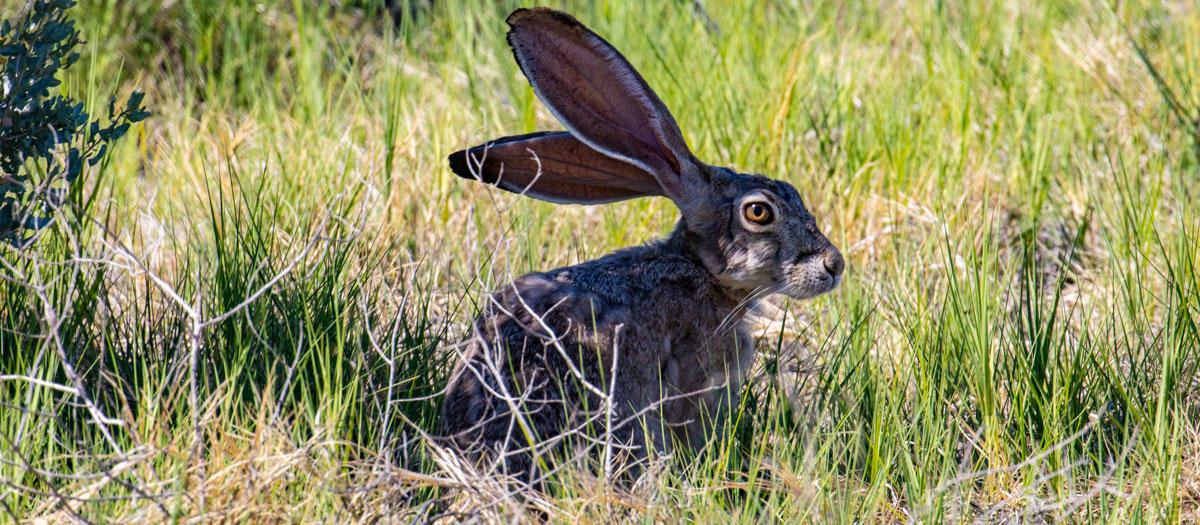Mammals of all shapes and sizes contribute greatly to the overall biodiversity of the Las Vegas Wash. Some of these fly in the sky, some live under the ground and some even spend most of their time in the water.
The majority of the mammals at the Wash are quite small, like the cactus mouse and western pipistrelle bat. The largest include coyotes and even a sighting of desert bighorn sheep. There have been a variety of sampling methods used to study different groups of these animals over the past 20 years.
Small mammals
Unique adaptations to the arid climate of Southern Nevada have helped small mammals achieve a ubiquitous role in the desert landscape. Small mammals in Southern Nevada are mostly nocturnal herbivores but insects, lizards, and other small mammals may also be make up a portion of their diets. Due to the limited information on the small mammal community near the Wash Wash, it was important to redevelop a baseline data set that accurately reflected the current small mammal community at the Wash.
The first small mammal survey was completed from July 2002 to July 2003. The primary goals for the study were to determine the presence and diversity of small mammals inhabiting the Wash using Sherman traps, which would subsequently allow for population estimation and investigation of habitat usage by these animals.
Eight species of small mammal were observed during trapping events at the six study sites. These animals include the long-tailed pocket mouse (Chaetodipus formosus), desert pocket mouse (Chaetodipus penicillatus), little pocket mouse (Perognathus longimembris), cactus mouse (Peromyscus eremicus), Merriam's kangaroo rat (Dipodomys merriami), desert woodrat (Neotoma lepida), house mouse (Mus musculus), and white-tailed antelope squirrel (Ammospermophilus leucurus).
A ninth species, the desert shrew (Notiosorex crawfordi) was also observed during a different study conducted at the same time period.
A second small mammal survey was conducted in 2010 and included marsh habitats, which had not been sampled in the previous survey. This survey captured a total of 10 species, adding four new species. These species included the brush mouse (Peromyscus boylii), deer mouse (Peromyscus maniculatus), Western harvest mouse (Reithrodontomys megalotis), and 5 individuals that were only identified to the rat genus.
Large mammals
A large and medium sized mammal study was conducted using motion-triggered camera traps from 2009 – 2011. These recorded movements were then downloaded and animals in the footage were identified. The study recorded eight mammal species including: coyote (Canis latrans), American beaver (Castor canadensis), black-tailed jackrabbit (Lepus californicus), desert cottontail (Sylvilagus audubonii), northern raccoon (Procyon lotor), ring-tailed cat (Bassariscus astutus), striped skunk (Mephitis mephitis) and western spotted skunk (Spilogale gracilis). and recommended that future surveys focus on riparian habitat. Due to recommendations of the first survey and the Wildlife Management Plan to focus on riparian habitats, a second iteration of the study ran from 2018 – 2019. Over the course of the 46 week study, the cameras recorded seven target species, five species that were recorded in the previous study and added gray fox (Urocyon cinereoargenteus) and bobcat (Lynx rufus) to the species list.
